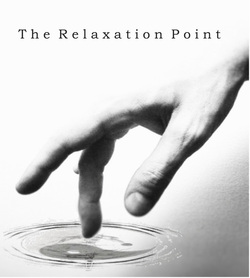Structural Bodywork

The aim of Structural Bodywork is to align the body in its relationship to gravity by working the many layers of fascia. What is fascia? Fascia is connective tissue. It is the fabric that surrounds the body and weaves throughout the body. It is incredibly strong and fluid and sleeves over all the muscle compartments and surrounds blood vessels and nerves. Fascia has only recently become better understood and revered for what it truly is: the matrix of our selves.
In the past, in medical dissections, the fascia has been removed to see what lies beneath it as if it had no function other than to separate the muscles, but it is the matrix which connects everything. It allows muscles and tendons to glide smoothly over one another allowing freedom of movement. It communicates to the rest of the body.
Over time, from injury or repetitive motion, the fascia can thicken in places, becoming stuck and inhibiting movement, holding the body in postures that are not efficient and cause tension as we attempt to remain upright in relation to gravity.
Structural Bodywork can release these inclusions, restoring the fascia to its ideal fluidity and allowing the muscles to fall back into place.
The work is typically done in a series of four sessions. The process begins with a consultation. Photos are taken of the current posture and, after analysis, a plan is set up. In each of the subsequent four sessions, Joseph will systematically work on a section of the body, releasing the fascia in that area until, by the end of the series, all areas contributing to the postural issue at hand have been addressed. Once the fascia has been released the body will continue to reorient itself until it reaches its optimal, efficient state.
Structural Bodywork is different from massage. It can feel much deeper and often be uncomfortable, but it is very effective in resolving chronic issues. The rate for Structural Bodywork is $100/hour with a 2 hour minimum.
We are offering this along with our regular therapeutic massage. Structural Bodywork and massage complement one another. Each addresses different things; while Structural Bodywork addresses postural issues beautifully, massage can relieve muscle tension and reduce stress and edema.
In the past, in medical dissections, the fascia has been removed to see what lies beneath it as if it had no function other than to separate the muscles, but it is the matrix which connects everything. It allows muscles and tendons to glide smoothly over one another allowing freedom of movement. It communicates to the rest of the body.
Over time, from injury or repetitive motion, the fascia can thicken in places, becoming stuck and inhibiting movement, holding the body in postures that are not efficient and cause tension as we attempt to remain upright in relation to gravity.
Structural Bodywork can release these inclusions, restoring the fascia to its ideal fluidity and allowing the muscles to fall back into place.
The work is typically done in a series of four sessions. The process begins with a consultation. Photos are taken of the current posture and, after analysis, a plan is set up. In each of the subsequent four sessions, Joseph will systematically work on a section of the body, releasing the fascia in that area until, by the end of the series, all areas contributing to the postural issue at hand have been addressed. Once the fascia has been released the body will continue to reorient itself until it reaches its optimal, efficient state.
Structural Bodywork is different from massage. It can feel much deeper and often be uncomfortable, but it is very effective in resolving chronic issues. The rate for Structural Bodywork is $100/hour with a 2 hour minimum.
We are offering this along with our regular therapeutic massage. Structural Bodywork and massage complement one another. Each addresses different things; while Structural Bodywork addresses postural issues beautifully, massage can relieve muscle tension and reduce stress and edema.
Positive Effects of Structural Bodywork
Here's what one satisfied client has to say:
|
"I had a number of issues which my wife felt were of myofascial origin, rather than degenerative. She finally prevailed on me to visit Joseph.. Joseph asked me what he could do for me and I spoke plainly “Just look, poke around and tell me what I need”. He did that, and I am quite impressed with the end results of his treatments.
1. Typical of men my age (early 60s) nature frequently and urgently calls for the use a urinal. Just one treatment, and both the frequency and urgency disappeared. I’m even sleeping the entire night without a nature call. 2. My right hand was particularly sensitive to even a simple handshake. The sharp pain is completely gone and appears it won’t be back. 3. Since childhood I was conscious that I did not walk fully erect but rather with rounded shoulders and head thrust forward. There has been major improvement in my posture. 4. Squatting was nearly impossible for me. If I did get down, there was no way I could get up without a helping hand or something to grab to pull myself up. The pain in my knees led me to avoid kneeling or squatting. Now I can squat and rise to full standing with ease. Nothing hurts. Throughout the process, Joseph always made the effort to provide explanations, and they generally made a lot of sense to me." - RD |